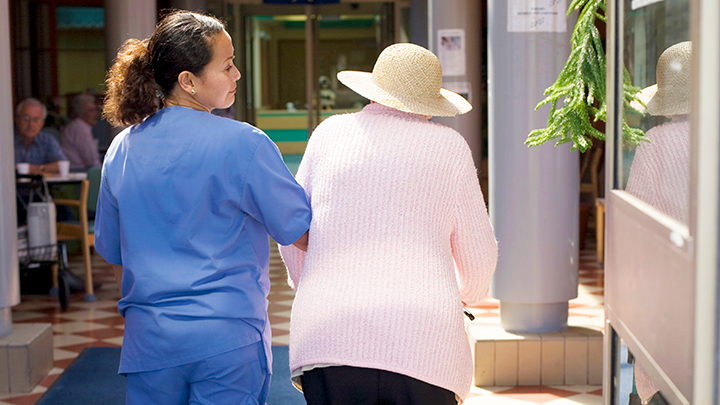

Patient Advisors are AHS volunteers who work with staff to help represent the voice of patients on many different initiatives around the province.
Read what some of them have said about End PJ Paralysis.
One Patient Advisor was very moved by seeing her hospitalized son dressed in his own clothes again
"My son Ethan was in an accident leaving him with a severe brain injury. We lived in the hospital for three months. A good portion of that time, my son was in a coma, and when he came out of the coma he was unable to do anything that he could before. He couldn’t sit on his own, he couldn’t talk to me, he couldn’t even raise his head off the pillow to look at me. Those months were so challenging for our family. Once my son was cleared of spinal cord injuries and it was safe to do so, we began dressing him in his clothes, and in clothes that he would normally wear. Due to his injuries we needed to make some adaptations to his pants to allow access to a catheter and safe nursing care. My mom helped me figure out how to do this so that he could be dressed."
"Seeing my son dressed and looking like himself became a visual and constant reminder that my son was still there, that there was something worth fight for, and that he was not gone. The days, weeks and months seemed to drag by in the hospital sometimes seeing little or no improvement. I know clothes are superficial, but seeing my son dressed reminded me of who he was, and it was easier for me to advocate for my son because that is who he is, not a disability, not a brain injury, not even the child in a coma. He is my son, and he is worth fighting for."
"In December 2018, I was hospitalized for two weeks. As an active patient and family advisor within AHS, I was aware of a relatively new initiative called End PJ Paralysis. Although this was not yet common practice on the unit I was on, I had read the research on the project and was intrigued by it. I made up my mind to self-test this. My daughter brought in two t-shirts and two pairs of leggings for me and took them home every few days for washing. I spent nights in the hospital gown, as I found it was easier and I didn’t want to create too much laundry for my daughter. Each day when I felt ready, usually by around 11 a.m. at the latest, I would get up, get dressed and get moving."
Read the full story.
Rozalia Meichl
As quoted in a previous media interview, Rozalia Meichl had been receiving treatment since getting shoved off a Calgary LRT platform in November, leaving her paralyzed from the chest down. The 64-year-old made a point of changing out of her hospital gown every morning, even though it was a lengthy process.
"The moment I'm dressed I know I'm ready for the day."
Dennis
Rockyview General Hospital - 7th Floor, Patient Experience Volunteer
"Several times over the last months I have noticed when working my volunteer shift and interacting with the positive situations with patients wearing their regular clothes and not the hospital gown.
The first one that made an impression on me was roughly 8 weeks ago when I took a Senior Patient for an off ward walk.
Comments from him were - “I feel great not to be wearing the gown with my butt hanging out.” and “I feel like I can go home.”
“ I am so enjoying this walk.”
The second one happened today when a patient in a wheel chair with a broken leg was also leaving the ward for an off-ward wheelchair ride.
She was dressed in street clothes and we had a Christmas Craft Market on the main floor with a great amount of booths.
Several people in the booths made comments about my patient – they thought she was a hospital visitor because she was dressed in her street clothes – she was very proud that she was not in her hospital gown with the open back.
To see this kind of positive action from my point of view is very impressive."
Eshleen Grewal
Patient Advisor
Eshleen interviewed dozens of patients about their experience with the End PJ Paralysis initiative while in hospital.
"While interviewing patients and their family members, I found they had a very positive response to End PJ Paralysis. Patients explained that they preferred wearing their own clothes to the hospitals gowns, and that getting dressed in their own clothes gave them a sense of having a regular routine and made them feel like they were getting better."
Sarah Staples
Occupational Therapist - Foothills Hospital
"It's been quite incredible seeing the patients up and dressed. It automatically gives the patients increased feelings of health and an identity on the unit. So nursing staff will come back and tell me about patients that are dressed, and patients have said to me that they feel like themselves again."